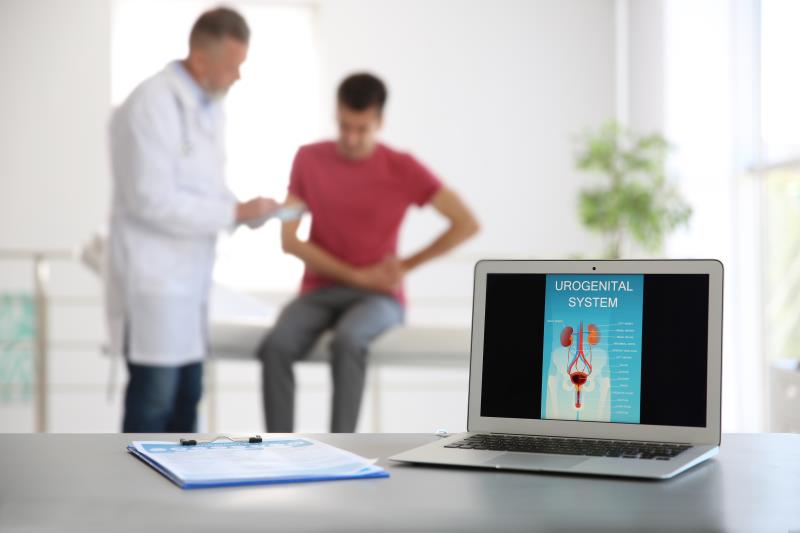
The incidence of urolithiasis (kidney/renal stones) depends on geographic, climatic, ethnic, dietary, and genetic factors. Assistant Professor Chua Wei Jin, Senior Consultant, Department of Urology at the National University Hospital in Singapore discusses with Audrey Abella why urolithiasis is an important healthcare problem that requires attention.
Introduction
Epidemiological surveys show that in economically developed countries, the prevalence rate of urolithiasis ranges between 4 percent and 20 percent. A first-time kidney stone former has at least 50-percent probability of recurrence in the ensuing 5–10 years. The driving force behind stone formation is the supersaturation of urine.
Below the supersaturation level, solutes remain soluble. Above the supersaturation level however, solutes precipitate and nucleation occur, subsequently aggregating to form a stone. The ability of urine to hold more solute in solution than pure water is due partly to the presence of various inhibitors of crystallization (eg, citrate). Imbalance between stone promoters and inhibitors tips the balance towards stone formation.
![Kidney stones [Image courtesy of NUH]](https://sitmspst.blob.core.windows.net/resources/images/8c9c1d1d-11d7-47b0-863f-aaf500c35e0b-kidney-stones12345..png) Kidney stones [Image courtesy of NUH]
Kidney stones [Image courtesy of NUH]
Diagnosing urolithiasis
Many kidney stones go unnoticed until they cause acute symptoms, specifically loin pain as the stone passes through the ureter. Oftentimes, kidney stones may be discovered incidentally. Signs and symptoms to look out for include:
· Pain in the side and back (below the ribs)
· Fluctuations in pain intensity, with pain periods lasting 20–60 minutes
· Pain waves radiating from the side and back to the lower abdomen and groin
· Bloody, cloudy, or foetid urine
· Pain on urination
· Nausea and vomiting
· Persistent urge to urinate
· Fever and chills if infection is present*
*Patients with pyelonephritis are usually unwell, typically presenting with fever, chills, rigor, and flank tenderness.
Specific urinary tests that may confirm diagnosis include urine dipstick/microscopy (presence of blood in the absence of white blood cells is suggestive of renal stones) and urine culture – if urinary tract infection (UTI) is suspected.
Radiologic examination
· Plain X-ray (kidney, ureter, bladder [KUB]) – A simple and fast test that allows clinicians to visualize hard stones (radiopaque) in certain parts of the kidney and ureter.
· Non-contrast computed tomography (CT) scan KUB – Best modality for detecting urinary tract calculus. CT scan allows accurate localization and measurement of the stone size and, at times, an estimation of stone hardness.
· Ultrasound – A useful modality to identify the presence of hydronephrosis and kidney calculus.
![Radiograph reflecting a kidney stone. [Image courtesy of NUH]](https://sitmspst.blob.core.windows.net/resources/images/1b40a533-4e38-4906-a049-aaf500c4147d-radiograph-reflecting-a-kidney-stone..png) Radiograph reflecting a kidney stone. [Image courtesy of NUH]
Radiograph reflecting a kidney stone. [Image courtesy of NUH]
Diagnostic challenges
· Majority of kidney stones are asymptomatic, rendering diagnosis difficult at times. There is also no routine screening method recommended.
· Visualization of stone can be difficult on plain KUB as the stone may be blocked by the bowel shadow.
· Lack of immediate access to resources like CT KUB may pose challenges in diagnosis.
· Ureteric colic is often associated with nausea/vomiting and non-specific gastrointestinal symptoms. These symptoms often pose diagnostic dilemmas.
A high index of suspicion for renal stones will aid in the early diagnosis in symptomatic patients. This is especially important in patients with a history of stones. Majority of local urologists follow the European Association of Urologists guidelines for the management of urolithiasis. UpToDate is also a good resource for most urological conditions.
Treating urolithiasis
For ureteric colic (stone lodged in the urinary tract), the currently recommended regimen is as follows:
- First-line: Non-steroidal anti-inflammatory drugs (diclofenac, etoricoxib)
- Second-line: Opioids (tramadol, codeine, pethidine)
- Referral to urologist is recommended.
For UTI/pyelonephritis (kidney inflammation):
- After appropriate urinary investigations are done, early antibiotic administration is warranted to improve outcomes.
- Antibiotics of choice: Oral – cefuroxime, co-amoxiclav; intravenous – third-generation cephalosporins, gentamicin
- Referral to a specialist and follow up is recommended.
Recurrent stone formers and young patients with kidney stones will require metabolic workup. Specialist opinion is recommended.
Conclusion
Primary care physicians should have a high index of suspicion in identifying kidney stones and should determine the need for early referral to a urologist. Early diagnosis and prompt management of pain and infection is key in the management of kidney stones.
